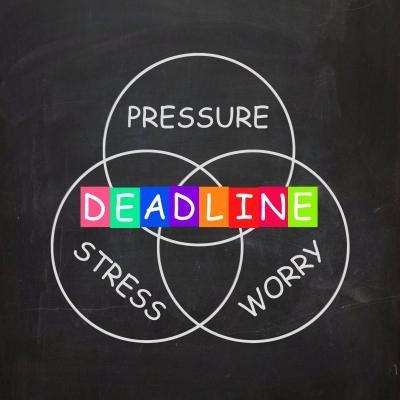When I speak at conferences and meetings, every once and awhile I notice one or two people who aren’t participating in the sessions but set up in the hallway or lobby, balancing a phone and laptop and looking grim. If I have a chance to catch up with them later, most often I find it’s a deadline or crisis that’s cropped up unexpectedly.

High-pressure situations can happen anytime, anywhere. Maybe it’s a predictable crunch time that rolls around every quarter or year, maybe a request from an important client on a difficult timetable, maybe an error or an audit or an unexpected staff shortage—or more than one of these together.
It’s the kind of challenge that calls on your best skills as you work as fast and as well as you can, for as long as you can, with high stakes and high visibility. And when you’re leading a team, the challenges multiply.
So how do those who are experienced at high-pressure work pull it off? Here are some tips:
Be ready.
This should go without saying. Pressure is a lot more manageable when you have a great team in place with the tools they need and the ability to work collaboratively.
Watch the big picture.
While everybody’s scrambling, make sure that you—or somebody—maintains some availability to keep an eye on overall progress or other relevant metrics, troubleshoot glitches, and ensure that routine responsibilities in other areas are being met.
Fix first, analyze later.
If there’s been a mistake or problem, How did this happen? may naturally be the first question to come to mind, but in the heat of the moment it can easily turn into (or be perceived as) placing blame. For now, focus on fixing the issue. Later, when things have calmed down, you can make time to talk with your team about causes from a perspective of preventing future occurrences rather than finger-pointing.
Be rigorous about processes.
It’s always tempting in the rush of the moment to start cutting corners in things like review and documentation. But high-pressure times, when errors are more likely to occur, are exactly when those safeguards are needed the most. Having said that…
Cut slack where you can.
Give people as much breathing room as possible. Are there regular meetings and functions that can be suspended until things get back to normal? Even indirect support can play a huge role. If people are working long hours, think about easing up on the dress code. Set up a mechanism to simplify ordering out for dinner—and pick up the tab whenever possible.
Set a calm, focused tone.
Remember, people are looking to you. If you’re panicky and scattered, they’re likely to follow suit. Stay calm, keep your focus, and communicate often with your team.
Few of us enjoy going through high-pressure times. But there is an up side: When you and your team come through it well, you can emerge with an even stronger reputation than before.
{Image Credit: Stuart Miles via Free Digital Photos}
